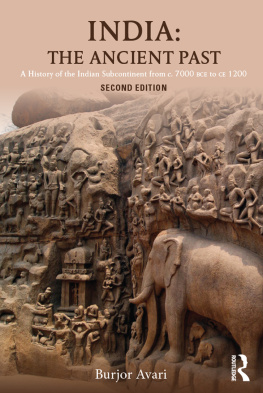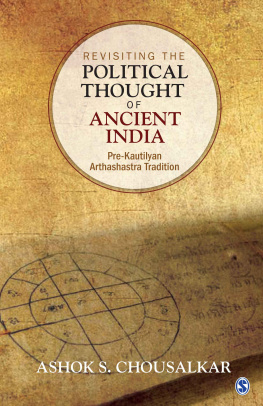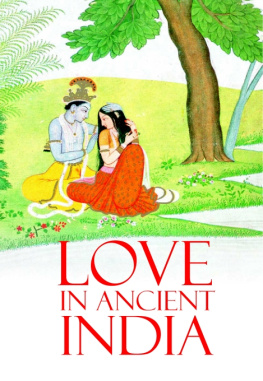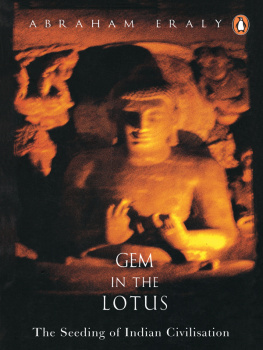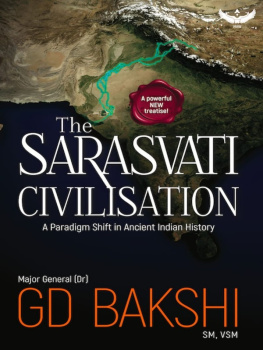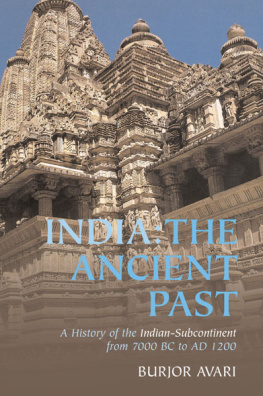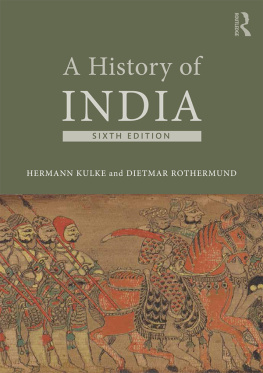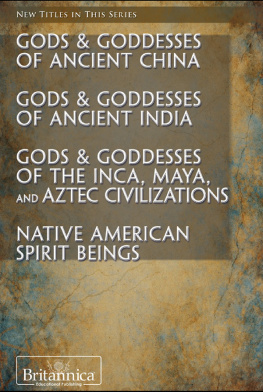
India: The Ancient Past
India: The Ancient Past provides a clear and systematic introduction to the cultural, political, economic, social and geographical history of ancient India from the time of the pre-Harappan culture 9,000 years ago up until the beginning of the second millennium of the Common Era. Through topics such as the Indus-Saraswati civilisation, Vedic and heterodox religions, the political economy, and social life in the Indian kingdoms, the book engages with methodological and controversial issues.
This fully revised and updated second edition includes:
three new chapters examining the differences and commonalities between the north and the south of India;
extended discussion on contested issues, such as the origins of the Aryans and the role of feudalism in ancient India;
new source excerpts to introduce students to the most significant works in the historiography of India, and questions for discussion;
study guides, including a list of key issues, suggested readings and a selection of Internet sources for each chapter;
specially designed maps to illustrate different time periods and geographical regions.
This richly illustrated guide provides a fascinating account of the early development of Indian culture and civilisation that will appeal to all students of Indian history.
Burjor Avari MBE is Honorary Research Fellow in the Department of History at Manchester Metropolitan University. He has taught history at school and university levels for over five decades. His previous publications include Islamic Civilization in South Asia: A History of Muslim Power and Presence in the Indian Subcontinent (Routledge, 2013).
India: The Ancient Past
A history of the Indian subcontinent from c. 7000 BCE to CE 1200
Second edition
Burjor Avari

Second edition published 2016
by Routledge
2 Park Square, Milton Park, Abingdon, Oxon OX14 4RN
and by Routledge
711 Third Avenue, New York, NY 10017
Routledge is an imprint of the Taylor & Francis Group, an informa business
2016 Burjor Avari
The right of Burjor Avari to be identified as author of this work has been asserted by him in accordance with sections 77 and 78 of the Copyright, Designs and Patents Act 1988.
All rights reserved. No part of this book may be reprinted or reproduced or utilised in any form or by any electronic, mechanical, or other means, now known or hereafter invented, including photocopying and recording, or in any information storage or retrieval system, without permission in writing from the publishers.
Trademark notice: Product or corporate names may be trademarks or registered trademarks, and are used only for identification and explanation without intent to infringe.
First edition published 2007 by Routledge
British Library Cataloguing-in-Publication Data
A catalogue record for this book is available from the British Library
Library of Congress Cataloging-in-Publication Data
Names: Avari, Burjor, author.
Title: India : the ancient past : a history of the Indian subcontinent from c. 7000 BCE to 1200 CE / Burjor Avari.
Description: Second edition. | New York, NY : Routledge, 2016. | First edition published 2007. | Includes bibliographical references and index.
Identifiers: LCCN 2015042418| ISBN 9781138828209 (hardback : alk. paper) | ISBN 9781138828216 (pbk. : alk. paper) | ISBN 9781315627007 (ebook)
Subjects: LCSH: India History. | India History 10001526.
Classification: LCC DS451 .A87 2016 | DDC 934/.01 dc23
LC record available at http://lccn.loc.gov/2015042418
ISBN: 978-1-138-82820-9 (hbk)
ISBN: 978-1-138-82821-6 (pbk)
ISBN: 978-1-315-62700-7 (ebk)
Typeset in Times New Roman
by Florence Production Ltd, Stoodleigh, Devon, UK
Dedicated to the memory of my dear parents, teachers and good friend David Melling.
A vision for India
Where the mind is without fear and the head is held high;
Where knowledge is free;
Where the world has not been broken up into fragments by narrow domestic walls;
Where the clear stream of reason has not lost its way into the dreary desert sand of dead habit;
Into that heaven of freedom, my Father, let my country awake.
(From Gitanjali, by Rabindranath Tagore, Nobel Laureate, 1913)
Contents
Figures
Maps
The first edition of this book came out in 2007; over the last eight years it has proved useful to students and other readers for the comprehensive manner in which it explains the history of ancient India in accessible language and form. It was therefore with great pleasure that I agreed to a request from Routledge in 2014 to prepare a second edition.
This new edition is the result of a years further research in ancient Indian history. This has been necessary because of a great increase in the number of publications in the subject. Controversies over certain topics, such as the place of the Aryans or the role of feudalism in ancient India, are ongoing and there is much to read and ponder over. The valuable suggestions of the referees for this edition have also had to be given full consideration. It has therefore been necessary to revise some of the original text, and to provide additional information. Every chapter contains some new material, and some chapters, particularly , have been re-written in order to clarify some of the differences and commonalities between the two halves of India: the north and the south.
One of the features of the first edition, unusual in textbooks of ancient Indian history, was the inclusion of short excerpts, from a variety of interesting works, at the end of each chapter. More new excerpts have been added in this edition and all have been placed within the body of the text. In this way, each excerpt can help the reader to gain immediately a deeper understanding of the general text. The references to sources are also inserted in brackets within each chapter, not as end notes as in the first edition. Every source is listed within the revised bibliography. At the beginning of each chapter (except ) a timeline is aimed to provide a useful chronology. At the end of each chapter is a brief list of the most important issues highlighted in the chapter, along with suggested texts for a deeper understanding of such issues. As students all over the world gain information digitally, and since there is so much online material of mixed value, I have provided an Internet selection of a maximum of five articles of particular relevance to each chapter. Finally, the questions at the end of each chapter have been revised for this edition, and it is hoped that they will provide stimulus to small groups of students to come together and discuss them.
I would like to thank the History Commissioning Editor at Routledge, Laura Pilsworth, and her deputy, Catherine Aitken, for taking interest in this new edition and encouraging me at every stage during the last twelve months.
Burjor Avari
Manchester 2015
There has been a profound change in the study of ancient Indian history within the last six or seven decades. Influential cadres of historians, archaeologists, anthropologists and environmentalists have rejuvenated earlier scholarship in this vast area, opening up unfamiliar lines of investigation, and contributing new insights for our deeper understanding of the multi-faceted aspects of ancient India.
Next page
